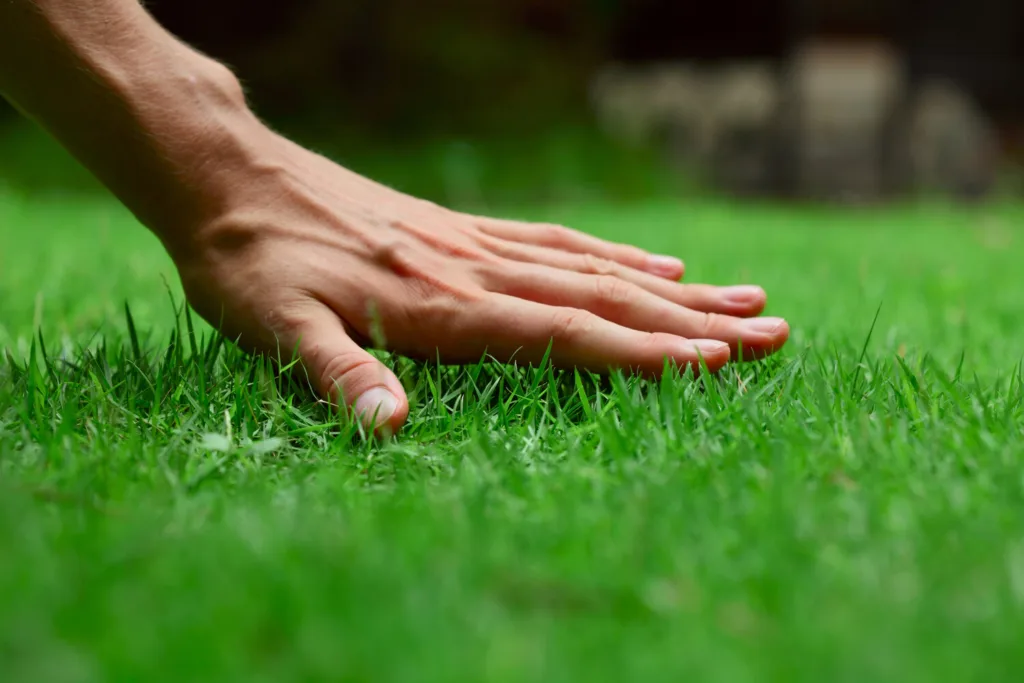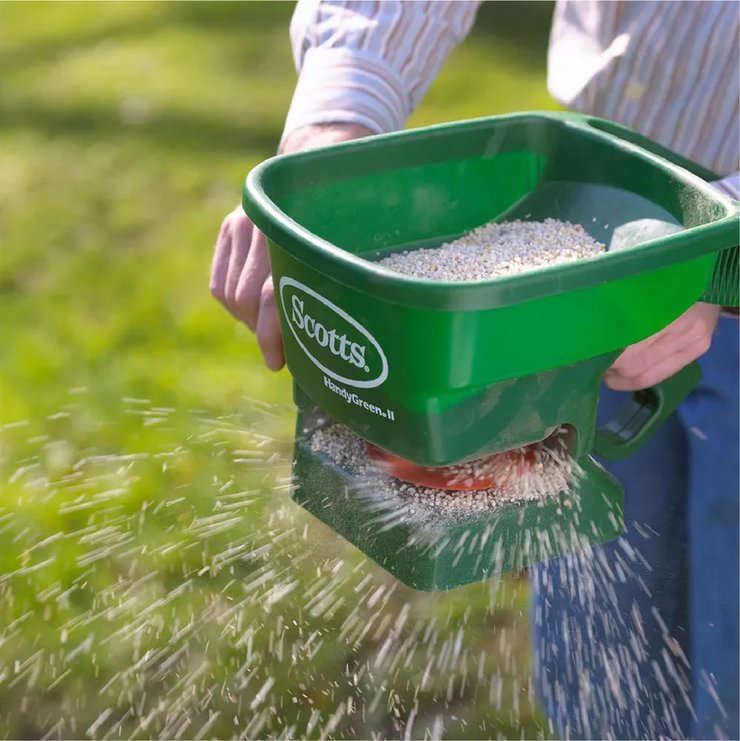Centipede grass (Eremochloa ophiuroides) is a type of warm-season turfgrass that is known for its green and lush appearance, low maintenance requirements, and ability to grow well in different soil types.
Originally from China and Southeast Asia, this grass has become a popular choice for lawns, parks, and golf courses in warm and coastal areas.
With its ability to thrive in warm climates and resist many common lawn problems, centipede grass is an excellent option for those seeking a vibrant and stress-free lawn.
| Characteristic | Description |
|---|---|
| Scientific Name | Eremochloa ophiuroides |
| Common Names | Centipede Grass, Common Centipede Grass |
| Family | Poaceae (Grass family) |
| Origin | Southeast Asia, China |
| Adaptation | Warm-season grass, well-suited for southern climates |
| Appearance | Coarse texture, light green color, stolons above the ground |
| Height | Low-growing, usually 1-2 inches, but can reach up to 4 inches |
| Growth Rate | Slow to moderate |
| Sunlight | Full sun to partial shade (but prefers full sun) |
| Soil Type | Well-drained, slightly acidic to neutral soils |
| Drought Tolerance | Excellent drought tolerance |
| Cold Tolerance | Moderately cold-tolerant, may experience winter dormancy |
| Disease Resistance | Susceptible to certain diseases, such as large patch |
| Maintenance | Low-maintenance, minimal fertilizer requirements |
| Watering | Moderate water needs, less water compared to other warm-season grasses |
| Mowing Height | 1.5 to 2 inches for optimal appearance |
| Uses | Residential lawns, parks, golf course roughs |
| Winter Dormancy | Turns brown during winter in cooler climates |
| Seeding or Sodding | Typically established by sodding or plugs |
| Invasive Potential | Low invasive potential, slow spreading |
| Resilience | Recovers well from light to moderate foot traffic |
| Common Issues | Susceptible to nematode damage, iron deficiency in alkaline soils |
| Fertilization | Requires minimal fertilization; avoid excess nitrogen |
| Cultural Tips | Avoid high phosphorus fertilizers; regular soil testing is beneficial |

Growing Season for Centipede Grass
To successfully grow centipede grass, it is important to understand the optimal conditions it requires.
This grass variety does best in warm, coastal climates and is most suited to USDA hardiness zones 7 through 10.
While it prefers full sun exposure, it can still thrive in partial shade. Additionally, centipede grass grows best in slightly acidic soil, with a pH level ranging from 5.0 to 6.0.
| Key Characteristics: what does centipede grass look like Centipede grass is a type of grass that has a coarse texture with short, upright stems and pointed, boat-shaped leaf blades. The leaves are typically light green. It grows in a carpet-like turf with a creeping growth habit, spreading by aboveground stolons. It is not as aggressive as some other warm-season grasses, which makes it easier to control. This grass requires low maintenance due to its slow growth rate, which reduces the frequency of mowing compared to other warm-season grasses like Bermuda grass. It also exhibits good shade tolerance for warm-season grass, making it suitable for lawns with partial shade. However, it thrives best in full sunlight. Centipede grass prefers slightly acidic soil with a pH range between 5.0 and 6.0. It is well-suited to soils that may be too acidic for other turfgrasses. While not as drought-tolerant as some other warm-season grasses, it displays reasonable drought resistance. However, it benefits from regular watering during dry periods. |
Planting the Soil for Centipede Grass
Creating a healthy foundation is crucial when it comes to growing centipede grass seeds. Start by removing any existing weeds, rocks, or debris from the area where you plan to plant seeds in the grass.
Once the area is clear, test the soil pH to ensure it falls within the optimal range. If the pH is too high, apply sulfur to lower it, or if it’s too low, use lime to raise it.
To prepare the soil for centipede grass, loosen it with a rake or tiller to a depth of at least six inches. This helps improve water drainage and root penetration.
Consider adding organic matter, such as compost or peat moss, to enhance the soil’s fertility and structure.
Planting Centipede Grass Seeds
After preparing the soil, it’s time to sow the centipede grass seeds or lay sod. The best time to plant centipede grass is during late spring or early summer when the soil temperature is consistently above 70°F. Follow these steps for a successful planting process:
Seeding Method:
Centipede grass seeds spread evenly across the prepared soil. Next, use a rake to lightly cover the seeds with soil, ensuring good seed-to-soil contact.
Finally, water the area gently, keeping the soil consistently moist until the seeds germinate.
Sod Method:
To lay your centipede grass sod, make sure the pieces are tightly laid together, without any gaps. After laying the sod, use a sod roller to ensure good contact with the soil.
Finally, water the sod thoroughly immediately after installation and keep it moist until it becomes established.
Watering and Fertilizing Centipede Grass
One of the advantages of centipede grass is its relatively low water and fertilizer requirements. However, it is essential to water and fertilize it properly to promote healthy growth. Here are some guidelines to follow:
Watering:
When it comes to watering your plants, it’s important to follow a few guidelines to ensure their health and vitality. Deep root growth is encouraged by watering your plants deeply but infrequently.
Aim to provide around 1 inch of water per week to meet the water requirements of your plants. This will help prevent the development of shallow root systems and make your plants more resilient to drought conditions in the long run.
It’s worth noting that frequent and shallow watering should be avoided, as it can lead to those shallow root systems and make your plants more vulnerable to drought.
Additionally, paying attention to the timing of your watering can also make a difference. By watering in the early morning, you allow the grass blades to dry before evening, reducing the risk of diseases.
This is because wet grass blades during the evening can create a favorable environment for disease-causing pathogens to thrive.
Centipede Grass Fertilizer:
Maintaining the nutrient levels of your centipede grass is essential for its overall health. Compared to other grass types, centipede grass has relatively low nutrient requirements.
It’s recommended to apply a complete, slow-release fertilizer with a nitrogen-phosphorus-potassium (NPK) ratio of 15-0-15 or 16-4-8 once a year during the late spring or early summer. This timing allows the grass to benefit from the nutrients during its growing season.
While fertilizer is beneficial for promoting healthy growth, it’s important to avoid excessive fertilization. Too much fertilizer can lead to the buildup of thatch, which is a layer of dead organic material that accumulates between the grass blades and soil.
Excessive thatch buildup can create an environment favorable for pests and diseases, negatively impacting the overall health of your centipede grass. Therefore, it’s best to follow the recommended fertilization guidelines to prevent any unwanted issues and keep your grass thriving.

Mowing and Lawn Care for Centipede Grass
Proper mowing and regular lawn care practices are crucial for maintaining a healthy centipede grass lawn. Follow these guidelines to keep your centipede grass looking its best:
Mowing Height:
It is recommended to maintain your centipede grass at a height of 1 ½ to 2 inches. Avoid mowing it too short, as this can weaken the grass and make it more prone to weeds and diseases.
Adjust your mower’s height to ensure that you do not remove more than one-third of the grass blade each time you mow.
Weed Control:
While centipede grass has a natural ability to resist weeds, occasional outbreaks can still occur.
To control them, spot-treat any weeds that appear with a selective herbicide specifically labeled for use on centipede grass. Avoid using herbicides containing atrazine, as they can cause damage to centipede grass.
Aeration and Dethatching:
To alleviate compaction and improve water and nutrient absorption, it is recommended to aerate the soil every two to three years.
Regularly monitor thatch buildup and remove it when necessary to prevent excessive thatch accumulation.
Troubleshooting Common Issues
While centipede grass is relatively low-maintenance, it can still face some challenges. Here are a few common issues you might encounter and how to address them:
- Drought Stress:
- If your centipede grass shows signs of drought stress, increase watering frequency and ensure deep soaking.
- Consider adjusting your irrigation schedule to provide the grass with about ½ inch of water every three to four days during drought periods.
- Insect Infestations:
- Keep an eye out for common lawn pests such as armyworms, webworms, or mole crickets.
- If infestations occur, apply an appropriate insecticide following the instructions on the product label.
- Disease Management:
- Centipede grass is generally resistant to many diseases, but occasional outbreaks can happen.
- If you notice signs of disease, such as circular patches or discolored areas, consult with a local extension office or lawn care professional for proper diagnosis and treatment recommendations.
Conclusion
Growing and caring for centipede grass is a rewarding experience, resulting in a lush, vibrant lawn that’s relatively easy to maintain.
By following the steps outlined in this article, you can ensure the successful establishment and long-term health of your centipede grass.
Remember to provide the ideal growing conditions, water and fertilize appropriately, mow and care for your lawn diligently, and address any issues promptly. With proper care, you’ll enjoy a beautiful centipede grass lawn for years to come.
People Also Ask
- What are the advantages of centipede grass?
- Low Maintenance: Centipede grass requires minimal care, making it an excellent choice for those seeking a low-maintenance lawn.
- Drought Tolerance: It displays reasonable resistance to drought, maintaining its appearance even during dry periods.
- Shade Tolerance: Centipede grass has good shade tolerance, making it suitable for lawns with partial shade.
- Adaptability: It adapts well to different soil types, including slightly acidic soils.
- Where Does Centipede Grass Grow Best?
- Centipede grass thrives in warm and coastal regions with a subtropical climate.
- It grows best in full sunlight but can tolerate partial shade.
- Well-suited for residential lawns, parks, and recreational areas.
- What Kills Centipede Grass?
- Excessive Nitrogen: Over-fertilization with nitrogen can harm centipede grass.
- Poor Drainage: Centipede grass prefers well-drained soil; waterlogged conditions can be detrimental.
- Invasive Grasses: Aggressive grass species may outcompete and suppress centipede grass.
- Why Is It Called Centipede Grass?
- The grass is named for its stoloniferous growth habit, where aboveground stems (stolons) resemble the many legs of a centipede.
- Why Is Centipede Grass Seed So Expensive?
- Centipede grass seed is often more expensive due to lower seed yields and challenges in seed production.
- It has a slower growth rate compared to other warm-season grasses, affecting the availability of seed.

